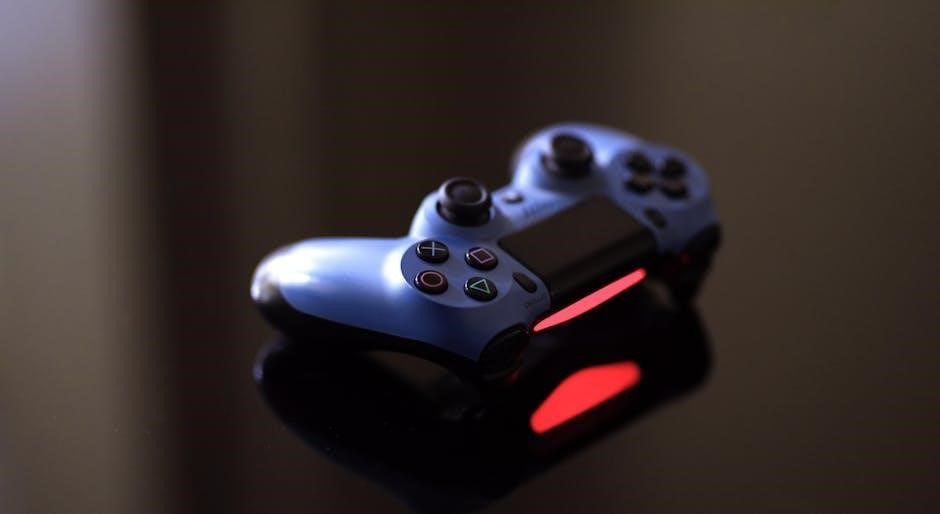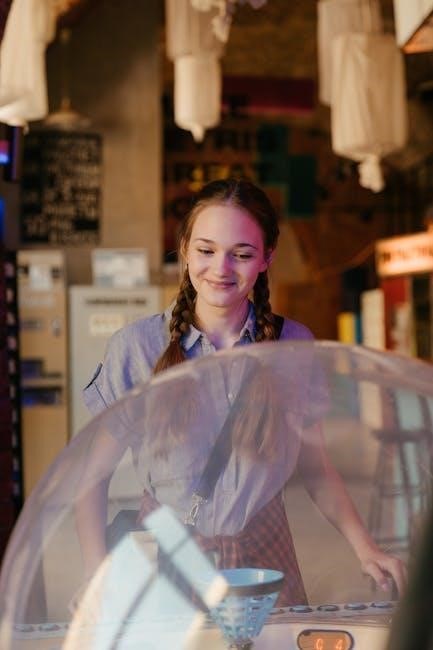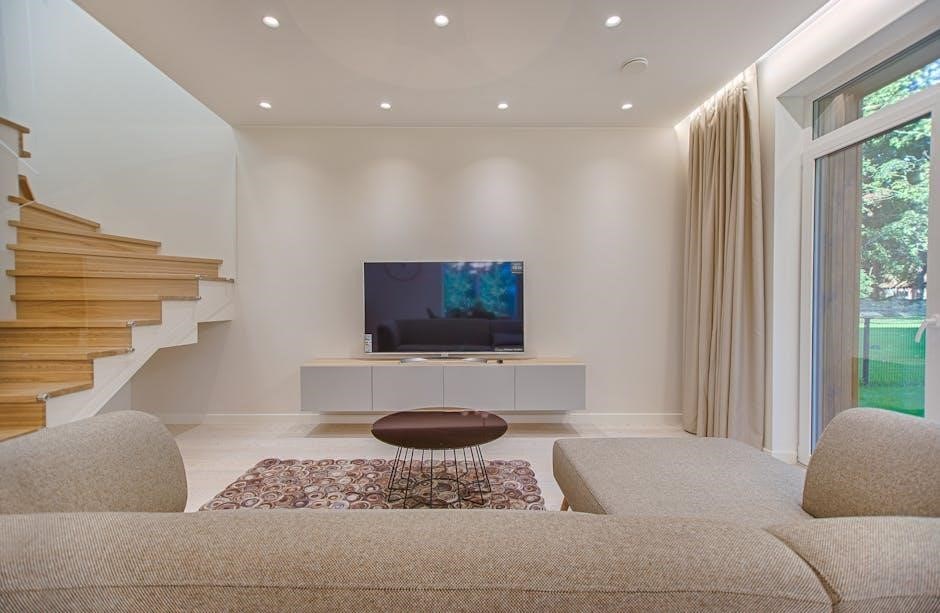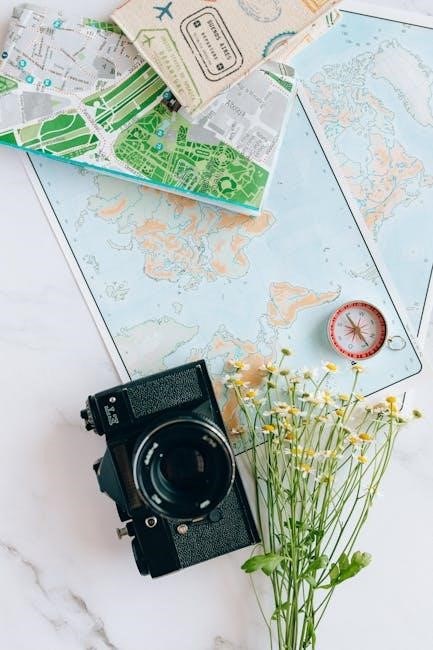EverQuest Crafting Guide: A Comprehensive Overview (Updated 12/09/2025)
Embark on a journey into Norrath’s crafting systems! This guide, updated today, 12/09/2025, details everything from beginner basics to advanced techniques,
leveraging insights from recent expansions like Visions of Vetrovia․
Crafting in EverQuest is a deeply rewarding system, allowing players to create valuable items, from potent potions and durable armor to powerful weapons and unique furnishings․ Unlike some modern MMOs, EverQuest’s crafting isn’t merely an afterthought; it’s integral to the game’s economy and character progression․
Initially, all toons can access basic crafting up to level 9, encouraging experimentation․ However, mastering a discipline requires dedication and skill point investment․ The system draws inspiration from the original EverQuest, emphasizing skill gains through actual crafting, not just recipe acquisition․ It’s a journey of discovery, requiring players to navigate a complex web of recipes and resources․
Why Crafting Matters in EverQuest
Crafting’s significance extends far beyond self-sufficiency in EverQuest․ It’s a cornerstone of the game’s economy, providing players with opportunities for substantial profit through trading and selling crafted goods․ High-end content often requires crafted items, making crafters indispensable to raiding guilds and serious adventurers․
Furthermore, crafting offers a unique gameplay loop for those seeking an alternative to traditional questing and dungeon crawling․ It’s a fulfilling path for players who enjoy meticulous work and resource management․ Even new players benefit, as crafting provides a means to gear up while exploring Norrath, circumventing the challenges of a sometimes unfriendly game․
The Four Primary Crafting Disciplines
Norrath boasts four core crafting disciplines, each offering distinct rewards and challenges․ Provisioning (Cooking & Brewing) focuses on consumable items, vital for adventurers․ Tailoring specializes in armor and clothing, providing essential protection and aesthetic customization․ Woodworking crafts weapons and furniture, blending combat utility with decorative elements․
Finally, Blacksmithing excels in forging durable weapons and robust armor․ Mastering these disciplines allows players to contribute significantly to the game’s economy and equip themselves effectively․ All toons can reach level 9 crafting, encouraging exploration of each discipline, and understanding their interconnectedness is key to success․

Provisioning (Cooking & Brewing)
Provisioning, encompassing both cooking and brewing, is crucial for sustaining adventurers in Norrath․ Crafted foods provide vital stat boosts, enhancing combat prowess and exploration capabilities․ Similarly, brewed beverages offer temporary enhancements, ranging from increased strength to improved mana regeneration․
This discipline is accessible to all players, with recipes obtainable through foraging and recipe acquisition․ Mastering provisioning requires understanding ingredient combinations and their effects․ It’s a profitable venture, as consumables are consistently in demand, supporting both individual needs and guild activities․ Early crafting to level 9 is encouraged!
Tailoring (Armor & Clothing)

Tailoring focuses on creating armor and clothing, essential for player protection and aesthetic customization․ From lightweight cloth garments to sturdy leather armor, tailors cater to diverse character classes and playstyles; Skill progression involves gathering fibers through foraging and mastering complex sewing techniques․
Recipe discovery is key, with new patterns unlocking enhanced stats and unique appearances․ Tailoring offers a significant economic opportunity, as demand for quality armor remains consistently high․ Understanding market trends and crafting sought-after items is vital for maximizing profits within the EverQuest economy․
Woodworking (Weapons & Furniture)
Woodworking is a versatile discipline, enabling crafters to produce both potent weapons and beautiful furniture for player housing․ Gathering wood through woodcutting is the foundation, requiring access to various forested zones․ Skill advancement unlocks increasingly intricate designs and stronger materials․
Woodworkers can specialize in crafting bows, clubs, or decorative items, catering to different market niches․ Mastering woodworking involves understanding wood types and their properties, impacting weapon damage or furniture durability․ Successful woodworkers capitalize on both functional and aesthetic demands within the game’s economy․
Blacksmithing (Weapons & Armor)
Blacksmithing stands as a cornerstone crafting profession, focused on forging durable weapons and protective armor․ Miners provide the essential ores – iron, steel, and rarer metals – fueling the blacksmith’s trade․ Skill progression unlocks the ability to create higher-tier items, catering to end-game content and demanding players․
Blacksmiths can specialize in crafting swords, axes, or plate armor, influencing their market appeal․ Understanding metal properties and tempering techniques is crucial for maximizing item stats․ Profitable blacksmiths adapt to market trends, supplying sought-after gear and fulfilling player needs․
Crafting Levels and Skill Progression
Crafting in EverQuest isn’t simply about recipes; it’s a dedicated skill progression system․ Each crafting discipline levels independently, increasing from 1 to a maximum attainable skill․ Your maximum skill increases by five points with each character level gained․ Skill points are earned by successfully crafting items, with higher-tier recipes awarding more experience․
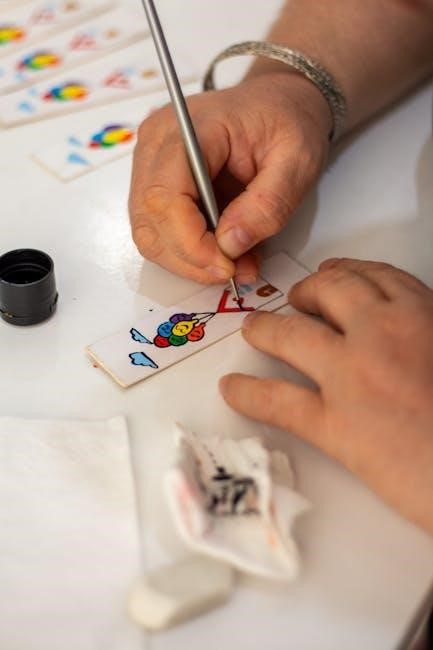
Reaching skill caps requires consistent effort and resource investment․ Harvesting skills are intrinsically linked, providing the raw materials needed for crafting․ Understanding these dependencies is vital for efficient progression and maximizing crafting potential, especially when aiming for rare item creation․
Leveling Your Crafting Skills
Efficiently leveling crafting skills demands a strategic approach․ Initially, focus on crafting lower-level items repeatedly – everything level 9 or below is accessible and encourages early skill gains․ This builds a foundation for tackling more complex recipes․ Consistent crafting, even of basic items, yields skill points․
Avoid resource wastage by prioritizing recipes aligned with your current harvesting capabilities․ Mentoring a low-level toon can also accelerate gains, offering a unique boost․ Remember, crafting is a long-term investment; patience and dedication are key to mastering a discipline․
Skill Caps and Maximum Skill Levels
Understanding skill caps is crucial for optimizing crafting․ Your maximum skill increases by five points with each character level․ Achieving rare item crafting requires a skill level related to the tier – typically, the tier level multiplied by five, minus ten․ For instance, a tier 3 rare might demand a skill of 140․
While there isn’t a hard cap preventing further skill gains, diminishing returns set in beyond certain thresholds․ Focus on reaching the necessary skill for desired recipes rather than endlessly grinding beyond practical requirements․ Prioritize quality over sheer skill level․
The Importance of Harvesting Skills
Harvesting is the bedrock of any successful crafting career in EverQuest․ Without a steady supply of resources, your crafting ambitions will quickly stall․ Each crafting discipline relies on specific harvesting skills – foraging for plants, mining ore, woodcutting, and hunting․
Investing in these skills alongside your chosen craft is paramount․ Higher harvesting skill levels yield better quality resources, essential for crafting superior items․ Don’t neglect these foundational skills; they directly impact your crafting efficiency and profitability․ A well-rounded crafter is also a proficient harvester!
Harvesting Resources
Securing raw materials is crucial for all EverQuest crafters․ Foraging yields plants used in provisioning and tailoring, found throughout the game world․ Mining ore provides metals for blacksmithing and other crafts, concentrated in specific zones․ Woodcutting delivers lumber essential for woodworking, requiring appropriate tools and skill․
Finally, hunting for animal components – hides, claws, and more – supports tailoring and provisioning․ Remember, maximizing your harvesting skill improves resource quality and yield, directly impacting your crafting success․ Efficient harvesting is key to a thriving crafting business!
Foraging for Plants
Plant gathering is fundamental for provisioning and tailoring crafters․ Successful foraging requires keen observation and knowledge of Norrath’s diverse ecosystems․ Different plants spawn in specific zones and at varying times, demanding exploration․ Increasing your foraging skill unlocks access to rarer and more potent botanical ingredients․
Remember to utilize foraging tools to improve yield and reduce harvest time․ Plants are essential for creating powerful potions, flavorful foods, and durable clothing․ Mastering foraging provides a consistent supply of vital crafting components, boosting your self-sufficiency․
Mining Ore
Ore mining is crucial for blacksmithing and, to a lesser extent, tailoring․ Various ores – from humble copper to rare platinum – are scattered throughout Norrath’s landscapes․ Mining skill dictates the types of ores you can successfully extract, with higher skill levels granting access to valuable resources․
Invest in a quality mining pick to increase efficiency and reduce the chance of tool breakage․ Ore is the foundation of weapon and armor creation, making mining a profitable and essential skill․ Understanding ore distribution and spawn timers maximizes your harvesting potential․
Woodcutting
Woodcutting provides essential resources for woodworking, and also finds use in some tailoring recipes․ Different wood types – birch, oak, and rarer varieties – are found in specific zones․ Your woodcutting skill determines which trees you can successfully fell, with higher skill unlocking access to superior materials․
A sharp axe is paramount for efficient wood gathering․ Wood is vital for crafting weapons, furniture, and structural components․ Mastering woodcutting involves learning spawn locations and optimizing your route for maximum yield, contributing significantly to crafting endeavors․
Hunting for Animal Components
Securing animal components – hides, claws, fangs, and more – is crucial for tailoring and provisioning․ These resources are obtained by hunting creatures throughout Norrath․ Higher-level zones yield rarer and more valuable components, demanding greater combat prowess․
Efficient hunting requires understanding creature spawn rates and patrol patterns․ Specific creatures drop specific components, necessitating targeted hunts․ Combining hunting with harvesting skills provides a well-rounded resource gathering approach, bolstering your crafting capabilities and market potential․
Crafting Recipes and Discovery
Unlocking new recipes is central to progression․ Recipes aren’t simply bought; discovery is key! Methods include finding recipe drops from creatures, obtaining them as quest rewards, or purchasing them from other players on the market․ Understanding recipe tiers – from common to rare – dictates the item’s power and crafting difficulty․
Experimentation and diligent searching are vital․ Some recipes require specific skill levels, while others demand rare components․ Mastering recipe acquisition ensures a steady flow of new crafting opportunities, driving both skill advancement and potential profits;
Finding New Recipes
Recipe acquisition in EverQuest is multifaceted․ Players discover recipes through various avenues, including monster drops – often requiring farming specific creatures․ Quests, particularly those tied to crafting guilds, frequently reward unique recipes․ The marketplace offers a dynamic source, allowing players to buy and sell discovered formulas․
Exploration is crucial; hidden caches and remote locations sometimes contain valuable recipe scrolls․ Don’t underestimate the power of community knowledge – forums and guilds often share recipe locations and farming strategies․ Consistent effort yields a diverse recipe collection․
Recipe Acquisition Methods
Acquiring recipes involves several key methods․ Direct purchase from Non-Player Characters (NPCs) is common, especially guild trainers; Looting defeated creatures provides a chance for recipe drops, demanding focused farming․ Completing specific quests, often daily or repeatable, rewards unique formulas․ The Broker, EverQuest’s auction house, facilitates player-to-player recipe trading․
Mentoring lower-level characters can unlock recipes previously unknown․ Some recipes are discovered through experimentation – successfully crafting similar items may reveal new possibilities․ Diligence and exploration are vital for a comprehensive recipe library․
Understanding Recipe Tiers
Recipe tiers dictate item quality and crafting difficulty․ Lower tiers (1-10) yield basic items, accessible to new crafters․ Higher tiers demand increased skill and rarer resources, producing superior goods․ Generally, a minimum skill level, often five times the tier minus ten, is required for successful crafting․ For example, tier 5 recipes typically need a skill of 15 or higher․
Rare recipes often appear within higher tiers, offering unique and powerful items․ Understanding these tiers is crucial for efficient resource management and maximizing crafting profits within the EverQuest marketplace․
Crafting Interfaces and Tools
Navigating the crafting window is essential for success․ The interface displays recipe requirements, resource slots, and a crafting attempt indicator․ Crafting assistants can automate repetitive tasks, streamlining production․ However, reliance on them can hinder skill progression․
Critical successes yield higher quality items, often with beneficial stats․ Understanding quality is vital for maximizing profit․ Players can also benefit from utilizing various tools and add-ons to enhance their crafting experience, improving efficiency and output․
The Crafting Window Explained
The crafting window is your central hub for creation․ It clearly displays the selected recipe, required ingredients, and the potential outcome․ Ingredient slots allow for precise resource placement, while the “Make” button initiates the crafting attempt․ A progress bar visually represents the crafting process․
Crucially, the window also shows skill checks and potential failure rates․ Examining these details before crafting is vital․ Understanding the interface empowers players to optimize resource usage and minimize wasted materials, leading to more efficient and profitable crafting sessions․
Using Crafting Assistants
Crafting assistants streamline the process, automating ingredient loading and repetitive tasks․ These tools, often macros or plugins, significantly reduce crafting time and potential errors․ However, reliance on assistants can hinder learning recipe requirements and skill check nuances․
While convenient, players should understand the underlying mechanics․ Utilizing assistants for mass production is effective, but mastering manual crafting fosters deeper understanding and adaptability․ Always verify assistant functionality and ensure compliance with game rules to avoid penalties․
Understanding Quality and Critical Successes
Crafting quality in EverQuest isn’t solely determined by skill; a degree of randomness exists․ “Critical Successes” occur when crafting, yielding items with enhanced stats or unique properties․ These successes are influenced by skill level, crafting tools, and sometimes, luck․ Higher skill increases the probability of a critical outcome․
Understanding quality tiers – standard, superior, and masterwork – is crucial for maximizing profit․ Players aim for higher tiers, as they command greater market value․ Mastering techniques to consistently achieve critical successes is a hallmark of experienced crafters, boosting both income and reputation․
Advanced Crafting Techniques
Elevate your crafting beyond basic recipes! Mastering multiple disciplines unlocks synergistic benefits, allowing resource self-sufficiency and diverse product offerings․ Successful crafters actively trade and sell their wares, understanding market demands and adjusting production accordingly․
Profit maximization requires strategic thinking․ Identify niche markets, monitor competitor pricing, and capitalize on expansion-driven demand․ Mentoring lower-level players can also yield crafting experience․ Becoming a versatile, market-aware crafter is the key to long-term success in Norrath’s economy․
Mastering Multiple Crafting Disciplines

Diversification is key to crafting mastery! While specializing offers focused expertise, understanding multiple disciplines unlocks resource independence and crafting synergies․ For example, a woodworker paired with a blacksmith can create superior weapon handles․ Provisioners benefit from foraging skills, ensuring a steady supply of ingredients․
This cross-training minimizes reliance on external markets and maximizes profit potential․ It also allows for crafting items requiring components from various trades․ Becoming a well-rounded crafter provides a significant advantage, fostering adaptability and resilience within EverQuest’s dynamic economy․
Trading and Selling Crafted Items
Maximize your profits by strategically trading and selling your creations! The EverQuest marketplace thrives on supply and demand․ Research current prices before listing items, utilizing broker tools and observing competitor offerings․ Consider specializing in niche products with limited competition․
Effective marketing is crucial; descriptive titles and accurate item details attract buyers․ Participate in guild economies and establish relationships with potential customers․ Don’t underestimate the value of crafting commissions, fulfilling specific requests for a premium price․ Consistent quality and reliable delivery build a strong reputation․
Crafting for Profit: Market Strategies
Turning crafting into a lucrative venture requires astute market analysis․ Identify consistently high-demand items, such as consumables or gear for popular classes․ Monitor price fluctuations and capitalize on shortages, adjusting your production accordingly․ Consider crafting materials as a separate revenue stream, selling raw resources to fellow players․
Diversification is key; don’t rely solely on one recipe․ Explore multiple crafting disciplines to broaden your product range․ Utilize crafting assistants to streamline production and reduce costs․ Regularly assess your profitability and adapt your strategies to maximize returns in the dynamic EverQuest economy․

Crafting in EverQuest II: Visions of Vetrovia
The Visions of Vetrovia expansion introduces a wealth of new crafting opportunities․ Players can discover unique recipes and materials exclusive to the dinosaur-infested zones, catering to both adventurers and collectors․ Expect adjustments to existing crafting systems, potentially impacting resource gathering and recipe acquisition․
Crafting becomes integral to progression within the new zones, offering gear and consumables essential for survival against the expansion’s challenges․ Keep an eye out for Vetrovia-specific crafting quests and rewards․ Adapting to these changes is crucial for crafters seeking to thrive in this exciting new chapter of EverQuest II․
New Recipes and Materials in the Expansion
Visions of Vetrovia dramatically expands the crafting landscape with a plethora of new recipes․ These recipes utilize materials sourced exclusively from the expansion’s zones, including dinosaur hides, unique plant life, and newly discovered ores; Expect recipes catering to all four primary crafting disciplines – Provisioning, Tailoring, Woodworking, and Blacksmithing․
Many recipes focus on creating gear specifically designed to counter the threats within Vetrovia, such as resistance armor and potent consumables․ Discovering these recipes often involves exploration, quest completion, and diligent harvesting․ Prepare to dedicate time to uncovering the secrets of Vetrovia’s crafting potential!
Crafting for the New Zones
Vetrovia’s zones demand specialized gear, making crafting essential for progression․ The dinosaur-infested wilds require durable armor and potent healing potions, achievable through Tailoring and Provisioning․ Woodworking excels in creating tools for navigating treacherous terrain, while Blacksmithing forges weapons to combat the expansion’s challenging creatures․
Focus on recipes offering resistance to poison and disease, common afflictions in Vetrovia․ Consider crafting items that enhance movement speed for efficient exploration․ Mastering these zone-specific crafts will significantly improve your survivability and overall experience within the new content․
Changes to Crafting Systems

The Visions of Vetrovia expansion introduced refinements to EverQuest II’s crafting mechanics․ While core principles remain, players now experience adjusted recipe tiers and resource requirements․ Skill caps have seen minor adjustments, encouraging continued skill progression․ The emphasis on harvesting remains crucial, with new materials exclusive to Vetrovia’s zones․
Notably, the crafting interface received subtle improvements for enhanced usability․ Critical successes are more frequent with optimized skill levels, yielding higher-quality items․ These changes aim to streamline the crafting process and reward dedicated crafters with more impactful results․
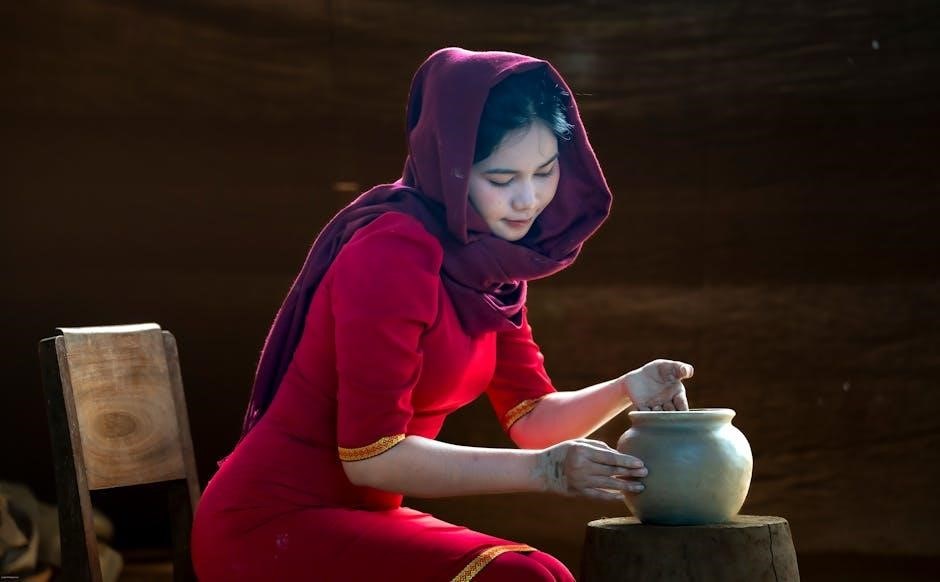
Crafting and Mentoring
Mentoring presents a unique synergy with crafting in EverQuest II, offering benefits to both mentor and mentee․ Guiding lower-level characters through initial crafting levels accelerates their skill development, providing a solid foundation․ Experienced crafters gain experience bonuses while mentoring, effectively leveling their own skills concurrently․
Optimizing mentoring involves focusing on early-tier recipes and providing necessary resources․ Mentoring to level 1 proves most efficient, maximizing experience gains for both parties․ This collaborative approach fosters a supportive community and streamlines the crafting journey for newcomers․
Mentoring Low-Level Toons Through Crafting
Successfully mentoring new players in crafting requires a strategic approach․ Focus on guiding them through the initial skill levels, up to level 9, where all basic recipes become accessible․ This early stage is crucial for establishing good crafting habits and understanding fundamental mechanics․ Provide assistance with resource gathering, as it can be challenging for beginners․
Prioritize recipes that offer quick completion times and minimal resource costs․ This keeps the mentee engaged and encourages frequent crafting․ Explain the importance of skill progression and the benefits of maximizing experience gains through consistent effort․
Benefits of Mentoring for Crafters
Experienced crafters gain significant advantages by mentoring lower-level characters․ Mentoring provides a unique opportunity to reinforce your own understanding of crafting fundamentals, recipe acquisition, and efficient resource management․ It’s a chance to revisit early-game content with a fresh perspective, potentially uncovering overlooked strategies․
Furthermore, mentoring can unlock exclusive rewards and benefits within the game, fostering a sense of community and collaboration․ Sharing knowledge and assisting others enhances your overall EverQuest experience, solidifying your position as a valuable member of the crafting community․
Optimizing Mentoring for Crafting Gains
To maximize crafting gains through mentoring, focus on toons up to level 9, as all crafting levels 9 and below are readily accessible․ Prioritize mentoring sessions focused on specific crafting disciplines, allowing the mentee to quickly grasp core concepts․ Efficiently guide them through initial recipe acquisition and resource gathering․
Regular, focused sessions are more effective than sporadic, lengthy ones․ Encourage experimentation and provide constructive feedback․ Remember, mentoring isn’t just about leveling; it’s about fostering a solid foundation for future crafting success, benefiting both mentor and mentee․
Common Crafting Mistakes to Avoid
New crafters often stumble by carelessly wasting valuable resources on unsuccessful attempts, especially when attempting higher-tier recipes without adequate skill․ Ignoring minimum skill requirements leads to frustrating failures and wasted materials․ Underestimating market demand is another frequent error; crafting items nobody wants results in lost profits․
Failing to research current market prices before crafting can also be detrimental․ Neglecting to diversify crafting skills limits potential income streams․ Remember, successful crafting requires planning, resource management, and a keen understanding of the EverQuest economy․
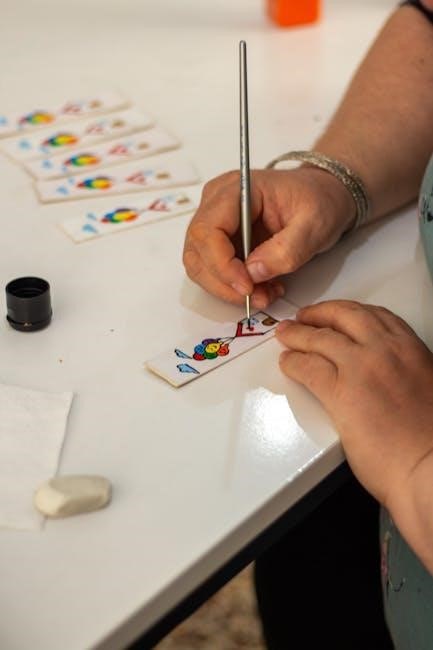
Wasting Resources
A common pitfall for EverQuest crafters is the careless expenditure of hard-earned resources․ Attempting recipes beyond your current skill level frequently results in material loss, offering no crafting experience in return․ This is especially true when experimenting with rare or expensive components․
Impulsive crafting without considering success rates also contributes to waste․ Always assess your skill relative to the recipe’s difficulty․ Prioritize recipes with a higher probability of success, particularly when using limited resources․ Careful planning and skill assessment are crucial for efficient resource management․
Ignoring Skill Requirements
A frequent error among new EverQuest crafters is attempting recipes that exceed their current skill level․ Recipes clearly display minimum skill requirements; disregarding these leads to guaranteed failures and wasted resources․ While some experimentation is natural, consistently ignoring these thresholds hinders progress․
Furthermore, understanding skill tiers is vital․ Lower-level crafting is accessible to all, but progressing requires dedicated skill investment․ Ignoring these requirements stalls advancement and prevents access to higher-tier, more profitable recipes․ Always prioritize skill development before tackling challenging crafts․
Underestimating Market Demand
Crafters often fall into the trap of producing items they want to make, rather than items players need or desire․ Thorough market research is crucial for profitable crafting․ Observe auction house trends, identify shortages, and analyze competitor pricing․ Simply flooding the market with common items diminishes returns․

Consider expansion-related demands; Visions of Vetrovia introduced new zones and recipes, creating fresh opportunities․ Ignoring these shifts leads to wasted effort․ Successful crafters adapt to player needs, focusing on high-demand, niche items for maximum profit․

